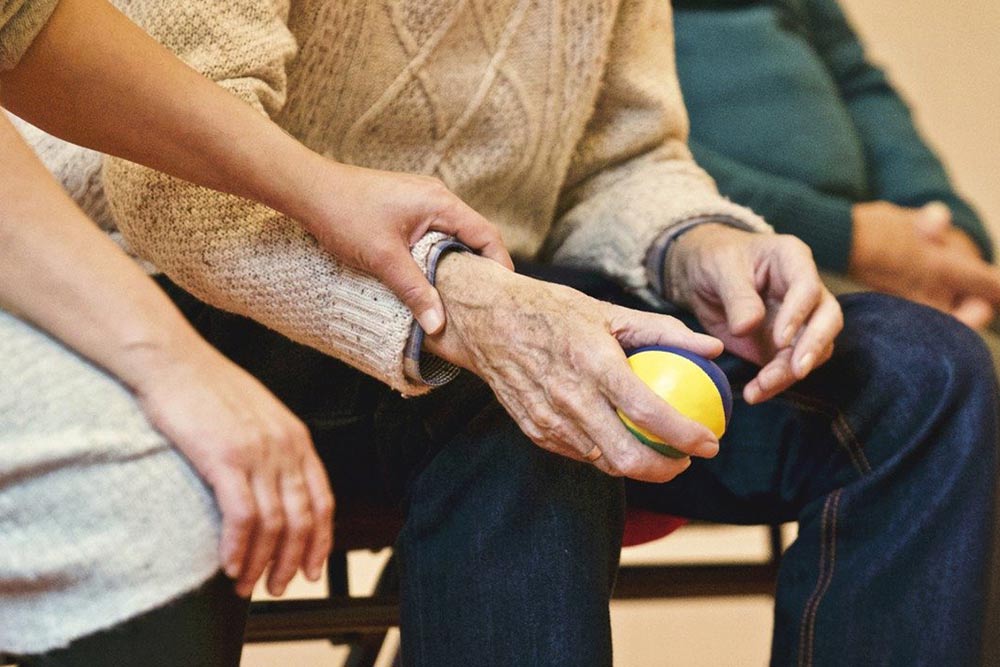Table of contents
Essential tremor: symptoms and treatments. Tremors and involuntary movements are caused by specific pathologies that modify our routine activities, such as drinking a glass of water or tying our laces. The most frequent pathologies are: Parkinson’s disease, essential tremor or tremor produced by the consumption of drugs.
Tremor, which we can suffer as a result of these pathologies, refers to an involuntary, rhythmic, vibratory and abnormal movement that occurs in the muscles. The tremor disappears when we are sleeping.
What are essential tremors?
Essential tremor (ET), or also known as hereditary tremor, refers to a disorder of the nervous system, specifically the neurological system, which produces involuntary and rhythmic movements. The body produces these movements unconsciously and the person who suffers them cannot stop them. These tremors can affect the hands, head, jaw, legs… or the whole body, but most often the tremor primarily affects the hands.
Essential tremor is usually not a serious illness, but it is true that it gets worse over time and in some people it can become powerful.
In people over 65 years old, 1 out of 5 people suffer from this disease. Although it can appear at any age it is more common in people from 40 years or more.
Do I have essential tremor or Parkinson’s?
Some clear differences that we can easily recognize, such as:
When tremors occur: essential tremor occurs when you use your muscles or perform the slightest movement; when a tremor occurs at rest, then we associate it with Parkinson’s disease.
Parkinson’s disease is associated with having slow movements, and having a stooped posture.
Parts of the body affected by the pathologies: the essential tremor acts in the hands, voice and head; on the other hand if you suffer from the disease of the Parkinson the tremors begin for the hands and they can end up affecting the legs or other parts of the body.
Symptoms of essential tremor
The main symptoms that can appear when having an essential or hereditary tremor are the following
Tremor is aggravated by movement.
The first place that the tremor is typically detected is in the hands. It can take place in one hand or both.
The tremor begins gradually.
Other factors such as stress, fatigue can worsen the tremor
What causes essential tremor?
The causes that provoke the essential tremor are currently unknown by the scientific field. Although some research suggests that the cerebellum, located at the back of the brain, is related to this disease because it is responsible for controlling the gestures we make and our motor skills. In other words, for many of the patients who suffer from essential tremor, the cerebellum does not function properly.
On many occasions, essential tremor is present in people from the same family, and when this happens, we are talking about a family tremor. This type of tremor is transmitted from parents to children and therefore is hereditary. Normally this tremor begins in maturity but it can be seen in both young and old people.
Types of essential tremor
There are two types of essential tremors:
Essential postural tremor: this tremor is shown when the patient voluntarily fixes a position that goes against gravity, such as extending the arm.
Essential kinetic tremor: this tremor appears when the patient performs a voluntary act, such as lifting a glass of water to bring it to his or her mouth.
The vast majority of patients suffering from essential tremors usually experience both kinetic tremor and postural tremor.
How is essential tremor diagnosed?
There are many diseases that cause tremor such as: multiple sclerosis, Parkinson’s disease, emotional stress, alcohol and drug withdrawal, brain tumors and some certain medications. That is why in order to have a reliable diagnosis it is necessary for a doctor to perform some medical tests where he can look for the causes of the tremor that the patient suffers. These tests will require: a blood and urine test, a neurological examination and a physical performance test.
If after these tests they do not find the reason of the tremor, it is probable that it will diagnose essential tremor. Since there is no specific test for this pathology.
Essential tremor: treatment
The objective of the treatment, aimed at people suffering from essential tremor, is above all to alleviate the symptoms that the patient has and thus improve their quality of life. It is important to emphasize that not all tremors need treatment, that is, if the patient suffers a mild tremor it will not be necessary. Among the treatments, where the tremor has a more aggressive influence, we can find
Physical therapy helps the patient improve his or her muscle strength and can reduce tremors.
Use of medications that help reduce tremors.
Use of surgery if medications have not helped the patient. Surgery involves deep brain stimulation (DBS). That is, electrodes are implanted in the patient’s brain that help coordinate muscle control.
How to live with essential tremor?
At Nomenial we know that it is a difficult task maintain the health of older adults. That is why older people who suffer from essential tremor need more specific care. For that reason, with this advice we hope we can help you give them a better quality of life:
Maintain a healthy diet: reduce the consumption of sugar and foods containing colorants or additives.
Practice relaxation techniques (yoga, massage…) to reduce stress, since stress aggravates tremors.
Avoid drinking exciting beverages such as coffee.
To find out in which part of the body suffers in smaller measure the tremors and to use that part of the body to execute the daily activities.
Use anti-slip supports so that the patient can have better control of objects.
Essential tremor symptoms and treatments
We hope that this article from Nomenial on the essential tremor symptoms and treatments has been useful.







